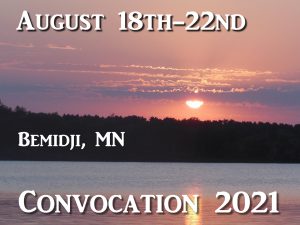I think the ‘crux interpretum’ in any discussion of the timing and severity of “Jacob’s Trouble” is Dan 12:1-2. Jesus’ manifest use of Daniel’s prophecy in Mt 24:15, 21 is decisive. The key is to note the similarity of language and terms used by the later prophets to build on and expand the prophecies of their predecessors. This should be for any student of scripture a basic observation how key motifs are developed throughout the scriptures. For example, it is not far to see that Jeremiah is using the same language and terms of the former prophets, particularly Isaiah and Micah to describe a final great tribulation and travail of the nation that would transition into the kingdom of God (Isa 13:6-8; 26:16-17; 66:8; Mic 5:3 with Jer 30:6-7).
With nearly exactly the same language that Jeremiah uses to describe the time of unequaled trouble that ends in Israel’s salvation (Jer 30:7), Daniel speaks of the same time of unequaled trouble in connection with the resurrection (Dan 12:1-2, 13). Hence, Daniel has given us the decisive interpretation of the time of Jacob’s trouble. It is the unequaled tribulation that occurs just before the dead are raised. It begins with the removal of a sacrifice (Dan 9:27; 12:11) and ends with Messiah’s return to destroy the self exalting prince, whom Paul will name, ‘the Man of Sin” (Dan 11:36-37 with 2Thes 2:4).
There can be no mistake. The connection of things is clear. Daniel applies Isaiah’s, Micah’s, and Jeremiah’s description of an age ending ‘travail of Zion’ to the last half of the seventieth seven (Dan 7:25; 9:27; 12: 7, 11). Regardless of whether the tribulation is interpreted as symbolic or literal, its duration is represented as brief, ending in the deliverance and resurrection of Israel (Isa 25:7-9; 26:16-21; Dan 12:1; Hos 5:15; 6:1-2; Eze 37:12-14; 39:8, 22, 28-29). If scripture is diligently compared with scripture, the result, at least the basic result, is plain for all to see.
What could be plainer than the simple observance that the time unequaled trouble ends with the resurrection? Jesus uses the same language of Daniel, almost verbatim, to speak of the unprecedented tribulation that must precede His return (Dan 12:1 with Mt 24:21-22, 29). The sign that marks the beginning of the tribulation is “the abomination of desolation which was spoken of by Daniel the prophet” (Mt 24:15). Significantly, Jesus Himself (not an editorial remark by Matthew) instructs His disciples to read of this sign in Daniel’s prophecy and to take care that they understand it. Clearly, this desolating sacrilege can happen in only one place, namely, the ‘holy place’ in Jerusalem. (Dan 11:31; 12:11; Mt 24:15-16; 2Thes 2:4).
In Daniel, the great tribulation ends with the resurrection. In Matthew’s account of Jesus’s Olivet prophecy, it ends with the Lord’s return in clouds of glory (Mt 24:29; Rev 1:7). In Paul’s little apocalypse, the day of the Lord comes only AFTER the self-exalting ‘man of sin’ (of Daniel’s vision) is revealed by his entrance into the temple of God (Dan 11:36-37 with 2Thes 2:3-4). The Thessalonian believers of 51 A.D. needed no further explanation to understand that Paul’s reference to the “temple of God” could only mean the ‘holy place’ in Jerusalem where Jesus had so plainly located the event that starts the tribulation. Jesus describes the event. Paul describes the man. Both are clearly referring to Daniel’s account of the act and the man who performs it. The believer who will obey the Lord’s directive to refer to Daniel’s prophecy will see the connection and the general outline of events that lead up to and follow upon the abomination of desolation.
(Note: Since the final destruction of Jerusalem in 132 A.D., interpreters began to look for ways to spiritualize Paul’s reference to the temple of God in order to conceive of a return of Christ that would not require the restoration of a Jewish Jerusalem with temple and sacrifice, but we have come full circle, and against all odds, all but a few remaining parts are in now place for the plain meaning of scripture to take place in all of its literal detail.)
Who can fairly deny that the last 3 1/2 years (the second half) of Daniel’s final week is bounded by the violation of the holy place by the self exalting prince (Dan 8:11; 9:27; 11:31; 12:11; 2Thes 2:4) at its beginning, and the deliverance of Daniel’s people and the resurrection of the saints at its end? What could be plainer than that? Moreover, Daniel’s mention of the standing up of Michael in Dan 12 is very significantly repeated in Rev 12. In both places, we have the last great persecution of the saints during the time of unequaled woe for the earth dwellers. Clearly, Satan’s “short time” begins when he is dejected from heaven by Michael (Dan 12:1; Rev 12:7-14) and this is the last 3 1/2 years, the second half of Daniel’s last seventieth seven (Rev 11:2-3; 12:6, 14; 13:5 with Dan 7:25; 9:27; 12:7).
It could hardly be plainer that the unequaled tribulation that is set in motion in both Dan 12 and Rev 12 with the standing up of Michael. This begins Satan’s ‘short time’ (Rev 12:12), which will mean unprecedented woe for the earth dwellers and persecution of the woman (Israel and the saints). Clearly, this is the 3 1/2 years of unequaled tribulation that begins with the removal of the daily sacrifice and the placing of the abomination (Dan 11:31; 12:1, 7, 11; Mt 24:15, 21) and ends with Christ’s return and the resurrection of the dead (Dan 12:2, Mt 24:29, 31). If these specific events are not held in inseparable relation to one another, then we are deprived of the protection from deception that Jesus invested in the definite details of His prophecy (Mt 24:25; Mk 13:23).
As to the much debated severity of the period, what is not to understand about the word, “unequaled?” It is a time like no other, without precedent or repeat. Of course, this is not to be understood strictly in terms of Jewish suffering, since all of nature will be in magnificent turmoil. What is clear is that the unequaled tribulation starts in Jerusalem and that the Antichrist will especially target Jews wherever he can find them. What’s not to understand about a 3 1/2 year flight into the wilderness from the face of an Antichrist? What kind of captivity is in view when the Antichrist is able to employ an implacable Islam hatred that will tread down Jerusalem for a continual period of 42 months? And will such an invading flood of hate filled Muslims be confined to the city of Jerusalem? Miraculous protection of a remnant within the city (probably under the supernatural protection of the two witnesses) does not too much extenuate the terrible implications for the greater population of Israel, particularly since the preservation of the remnant will depend in no small part on the wakefulness of believers to know the time and conduct many to prepared places of refuge according to the plainness of the scripture on this matter.
The best way to show that no past precedent or partial fulfillment could have been the fulfillment of Jeremiah’s, Daniel’s and Jesus’s words about the time like no other is to show that it ends in nothing short of the resurrection of the righteous (Isa 25:8; 26:19; Dan 12:1-2, 13; Mt 24:31; 2Thes 2:1). The eschatology of the OT is the eschatology of the covenant; and Jacob’s trouble, or the “great tribulation,” is simply the last phase of the ‘discipline of the covenant’ before the great transition that the orthodox have always referred to as “the Redemption.”
To conceive of the modern return as superseded by another shattering loss of nation and temple seems unthinkable in view of all the prophets said concerning the return to the Land, a modern miracle of truly ‘biblical proportions’. What is often overlooked is that the prophets saw both a long exile and a brief episode of unequalled affliction just before the end. Failure to recognize this necessary distinction has led some to dismiss the thought of a future dispersion under the reign of Antichrist. The prophets did not always distinguish clearly between these two distinct episodes of Jewish dispersion and return, but their prophecies, duly compared and considered, demand it.
The prophets recognized that not all Jews would return to the Land until after the tribulation. The far greater aliyah from the countries of sojourn awaits the end of Zion’s travail with the Lord’s return. Eze 38 & 39 is very good to distinguish between the two stages of Jewish return, one that is partial and before the battle of God and Magog (Eze 38:8), and one that is complete and to the last person at the war’s end (Eze 39:22, 28-29). The apocalyptic vision a yet further exile of brief duration is distinguished by noting the stages of return. First there is the return from the “desolations of many generations” (Isa 61:4; Eze 38:8). Then follows the final desolation of a restored city and sanctuary.
In addition to the very clear reference in Rev 12, a number of other scriptures show a flight into the wilderness where God has determined to meet with Israel face to face in a final pleading of judgement and mercy. There are references in the OT (I’d have to find them) that not only speak of a future trek through the wilderness, but of the very specific lands on the other side of the Jordan where Jews will flee and seek refuge. Among them are some of the same territory that the first Israelites under Moses traversed on their way to the Land. One specific name for this territory is “the wilderness of the peoples.”
Whereas there will be significant survival in Jerusalem itself (Zech 14:2), scripture is equally clear that survival will depend on urgent flight to prepared places of refuge and hiding, as the far greater part of the population will be trapped by the unexpected invasion of Antichrist. Certainly some will be able to be miraculously shielded from the wrath of the Antichrist inside even the city itself (the two witnesses?), but it is only reasonable, in view of the Lord’s clear warning, that the greater prospect of survival will be outside the Land, as inferred also from such passages as Isa 11:12; 27:12-13; also compare Dan 11:41 with Isa 16:3-4; 26:20; 42:11 (Masoretic text).
In any event, scripture is clear that Jews will be returning from the very desert places that their fathers travelled through on their way to the Land. Scripture is very specific of the trek back home through that particular wilderness, which is today a barren wasteland. Why through that region? It is because Jews have fled from the face of the Antichrist and will return with His destruction in the day when the great trumpet of Jubilee is blown (Isa 27:13 with Mt 24:31). This assumes, of course, that we take the prophecies of a second exodus with all the literalness of the first, and not as most scholars who see these prophecies as merely metaphorical of the spiritual restoration of the gospel.
It is moot question whether a future time of affliction and wilderness flight should be called another captivity or dispersion. Scripture is clear that Jerusalem will be a desolation and that the cities of Israel will be restored after a great and final devastation. We must not quibble over words or the question of the severity of this sure and certain siege of the Land and the world wide persecution of the Antichrist. Our concern is that many will be caught off guard with no realistic expectation. It is enough if a tribulation of flight and world wide persecution beginning in Jerusalem is soberly acknowledged.
But what does flight into the wilderness mean? What does the treading down of the city for 42 months of terrific desolation imply? It is interesting that modern scholars such as N.T. Wright have only echoed in recent days the view of the rabbis that have long held that Jewish presence in the Land should not be understood as the end of the exile. In their view, the exile has not ended until an all righteous nation can finally and forever, “lie down safely and none make them afraid.” This is how prophets understood the end of the exile. Israel remains in covenant jeopardy until the coming in of the ‘everlasting righteousness’ of the ‘everlasting covenant’ (Jer 32:40; Dan 9:24). This explains why Jeremiah would see the return from Babylon as coming clearly short of the promise, requiring a further time of unequaled trouble. It is why Daniel shows that the ultimate deliverance of his people would await a further seventy sevens. Quite clearly, Daniel puts the final trouble seen by Jeremiah, and the travail seen by Isaiah and Micah, at the very end of seventy sevens, the last half of the last seven to be exact.
The fuller data of all that scripture reveals concerning exile and return will confirm this distinction between the long exile of many years and a short time of unequaled desolation and dispersion that occupies the time immediately preceding deliverance of Israel. It is the tendency to confuse these distinct phases of the exile that has created the illusion that the present return will never be superseded by another disruption of national continuity, a dangerously misleading and disarming conclusion that those living in the Land can least afford! Failure to make this distinction has been a principal source of much passionate defense of Israel’s future security.
How can anyone read the covenant of Lev 26 and Deut 28-32 and suppose that peace in the Land can long endure independently of the obedience of faith? Regardless of our love for Israel, the natural branches are under the curse of the law until they are “in Christ!” It is an axiom of the covenant that “Until the Spirit be poured upon us from on high … desolations are determined” (Isa 32:15; Dan 9:26). Regardless of how many survive in or out of the Land during the great tribulation, what is not to understand about 42 months of desolation for Jerusalem, flight into the wilderness, and unequaled tribulation?
I believe it was the revelation that the return from exile would be superseded by another time of unprecedented trouble that so astonished Jeremiah. This was a great anomaly to behold, as it contradicted all that would have been expected from the glorious prophecies of return found all throughout Isaiah and the earlier prophets. However, even there, Isaiah and the earlier prophets uniformly spoke of an ultimate time of travail in the Land that would precede the birth of the nation and transition into the kingdom of God on earth with a final, and now complete, return from the Diaspora.
I am suggesting that Jeremiah himself was astonished by this very disjuncture between the longer exile and the short time of unequaled travail on the eve of the nation’s final deliverance. The tribulation was seen as the last stage of the discipline of the covenant (Deut 4:30; 32:36; Dan 12:7). It is likely that Jeremiah would have naturally conceived that the return would bring in the everlasting righteousness of covenant promise with its guarantee of abiding permanence in the Land. Instead of the hoped for golden age of everlasting peace and righteousness, he sees instead every man’s hands on his loins and all faces turned to paleness, words remarkably similar to Isaiah’s description of the great day of the Lord in Isa 13.
Daniel follows Jeremiah’s vision with his own revelation that the ultimate deliverance of his people would be delayed until the end of an additional seventy sevens. Note too that Zechariah sees the Day of the Lord as coming upon a people who have already returned to the Land. This day of ultimate judgment and deliverance is preceded by a capture of Jerusalem that results in a further captivity of many of the city’s inhabitants (Zech 14:2). There is no evidence that the prophets were able to distinguish the further, much longer exile that has followed the Roman destruction, but they did see that the Redemption would not come until the final chastisement of the Antichrist (Isa 10:27; 14:25; Jer 30:8, 14). After the destruction of the Antichrist at the day of the Lord, the penitent survivors of Israel would then return from every country. Much to be distinguished from any earlier return, this will leave none behind (Eze 39:28). Contrary to replacement arguments that would limit the return prophecies to the return from Babylon, it is of great significance that the post-exilic prophet Zechariah continued to prophesy of this further, post-day of the Lord return (Zech 8:7-8, 23; 10:8-10). This is the plain order of events that is crucial for all those who wait for the consolation of Israel to understand.
Whether we call this short time of wilderness flight a further captivity, expulsion, or dispersion from the Land makes little difference. A disaster of unthinkable proportions is destined for the city of Jerusalem and the Jewish people as far as the long arm of the Antichrist may reach. That much is sure; and our readiness and response to the clarity of scripture on this question will be a matter of great personal accountability, most particularly where the leadership of the church in the Land is concerned.
This brings the final question of how far the events of 70 A.D fulfilled, even partially, the demands of the context of Mt 24:15-31, since some have suggested that the worst of the great tribulation may be behind us, leaving only some kind of lesser tribulation to precede the Lord’s return. Will the Olivet prophecy bear this kind of division? Is the tribulation to be realized in different installments, the greatest and most terrific in 70 A.D. and another crisis of lesser intensity in the days just preceding Messiah’s return? Again, Dan 12:1-2 is the decisive turn key of interpretation on this question.
If the abomination of desolation and the removal of the regular sacrifice marks the beginning of the last half of Daniel’s seventieth week (Dan 12:11; Mt 24:15-16, 21, 29, 31), and if the standing up of Michael in both Dan 12 and Rev 12 marks the last 3 1/2 years before the resurrection and the kingdom, then one must either spiritualize, not only the Lord’s post-tribulational return in Mt 24:29, but also Daniel’s post-tribulational resurrection in Dan 12:2, 13. Else, the whole must be acknowledged as future. The very important connecting phrase, “THOSE DAYS,” in Mt 24:19, 22, 29 simply will NOT permit the dividing up of the Olivet prophecy, distributing its parts, rather vaguely between the events of 70 A.D. and the eschatological future. This will NOT work without great violence to the clear meaning of the text! No, wherever one sees the beginning of the tribulation of THOSE DAYS,” there is no break in the unequaled severity of THOSE DAYS until the Lord returns in clouds of glory “immediately AFTER the tribulation of THOSE DAYS” (Mt 24:29; Rev 1:7). What could be plainer?
This is precisely what drives the school of interpretation that call themselves, “consistence preterism,” to postulate a past resurrection of Daniel and the saints at the end of the 70 A.D. destruction of Jerusalem. This should tell us what extremes one is compelled to go to avoid the clear connection of these events. Such is the cost of “consistency.”
We would very much like to accommodate the appeals that we show a more modest reserve in our opinions. To earn for ourselves the stigma of dogmatism is constructive of nothing. However, to suggest that scripture is not clear at this point would be to undermine the very words that Jesus gave to save many alive and to deliver His sheep from the unequaled deception of those days (Mt 24:15-16, 21 with Mk 13:23). No, the scripture is very clear. No special aptitude for interpretation is required, just that disposition of spirit that was in Daniel when he ‘set his heart to understand,’ as Jesus instructs us in Mt 24:15. It is a plainness of clear meaning that will make many, particularly those in authority, greatly accountable before the Lord for their measure of care and their unwillingness to consider hard things.
We are not to suppose that because the Lord’s Olivet prophecy proved serviceable and applicable to those believers of first century Judea who would flee to Pella that it will be any less vital to those who will escape being trapped by the Antichrist. Not only this, but the Lord’s instruction to read of this event in Daniel’s prophecy with understanding would prove to be the key that opens, not only Daniel, but all the prophets for the preparation of the end time remnant and the finishing of the mystery that brings the kingdom (2Thes 2:7; Rev 10:7; 11:15). This, however, will not be local and confined to Jerusalem, as in the first century, but world-wide.
For the last two centuries of premillennial scholarship, it has been considered a ‘given’ of prophecy that a restored Israel would suffer a final 42 months of domination by the Antichrist. There would be a momentary loss of nationhood as the invading forces of the Antichrist would over-run the city of Jerusalem and desecrate the ‘recently’ restored holy places (Isa 63:18; 64:10-11). Jacob’s trouble was seen to be the unequaled tribulation of affliction and travail that would be the prelude the Day of the Lord deliverance of Israel (Paul’s ‘natural branches’). It is only in recent decades that this axiom of the premillennial faith has been mixed with various shades of preterism, such as to call two centuries of premillennial scholarship into question. I ask you; who’s being novel here? The really novel view, at least for premillennial scholarship, is that Jacob’s trouble is past with the events of antiquity, or more recently with the Holocuast of WWII Europe.
This means that Jacob’s trouble has passed into history with only a return that continues to expose Israel to the vengeance of her enemies round about. No, Jacob’s trouble, as Jeremiah uses the term, cannot end with anything short of Israel’s salvation and the promised righteousness that will preserve them in the Land forever, because of the messianic (“everlasting”) righteousness (Jer 23:5-6; 32:40; Dan 9:24). Sadly, the view that the time of Jacob’s trouble is already past has found appeal (at least until very recently) among many of the church in the Land. It is a view they can least of all afford. Because it is so comparatively new among premillennial writers, this is hard to explain on strictly academic grounds. We must be frank in saying that we believe it is a blindness that is supernatural, as it threatens to disarm those living in the Land of vital, life saving insight that is crucial to their perspective and readiness. In the words of a famous Jewish poet, “it’s time to stop talking softly now; the hour’s getting late.”
There are some things that are clearly happening at the same time there, such as the mourning of the tribes, really many things that just don’t add up to the kind of military-like resurgence that they see in those few passages. This is a nation that has just been spiritually raised from the dead, and any fighting will be done by God without the use of carnal weapons (‘Spirit of His mouth” etc.). If there’s anywhere I see some “over-literalization” to the point of the ridiculous, it’s there. What do you think?
With affection and much appreciation, Reggie




